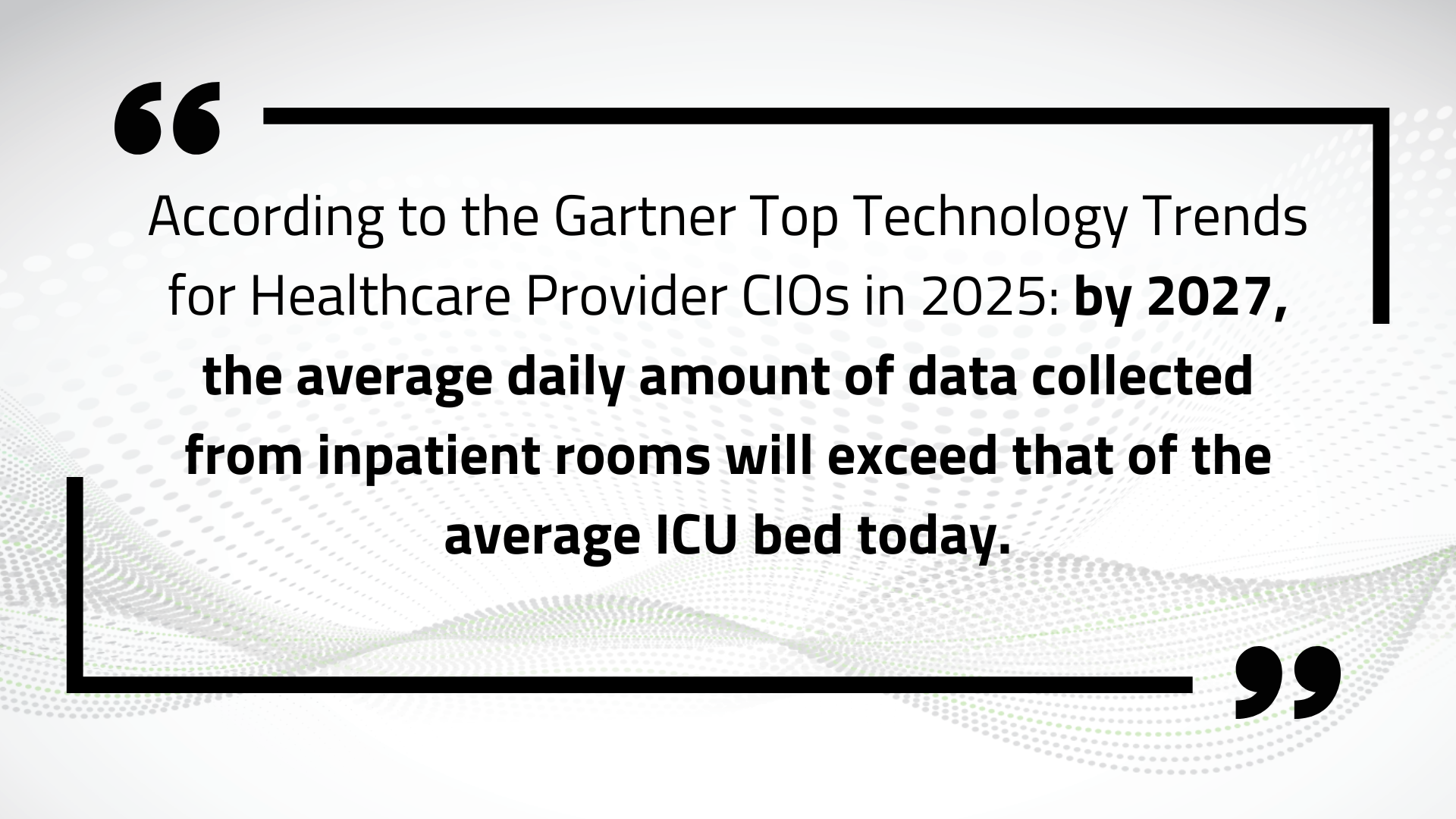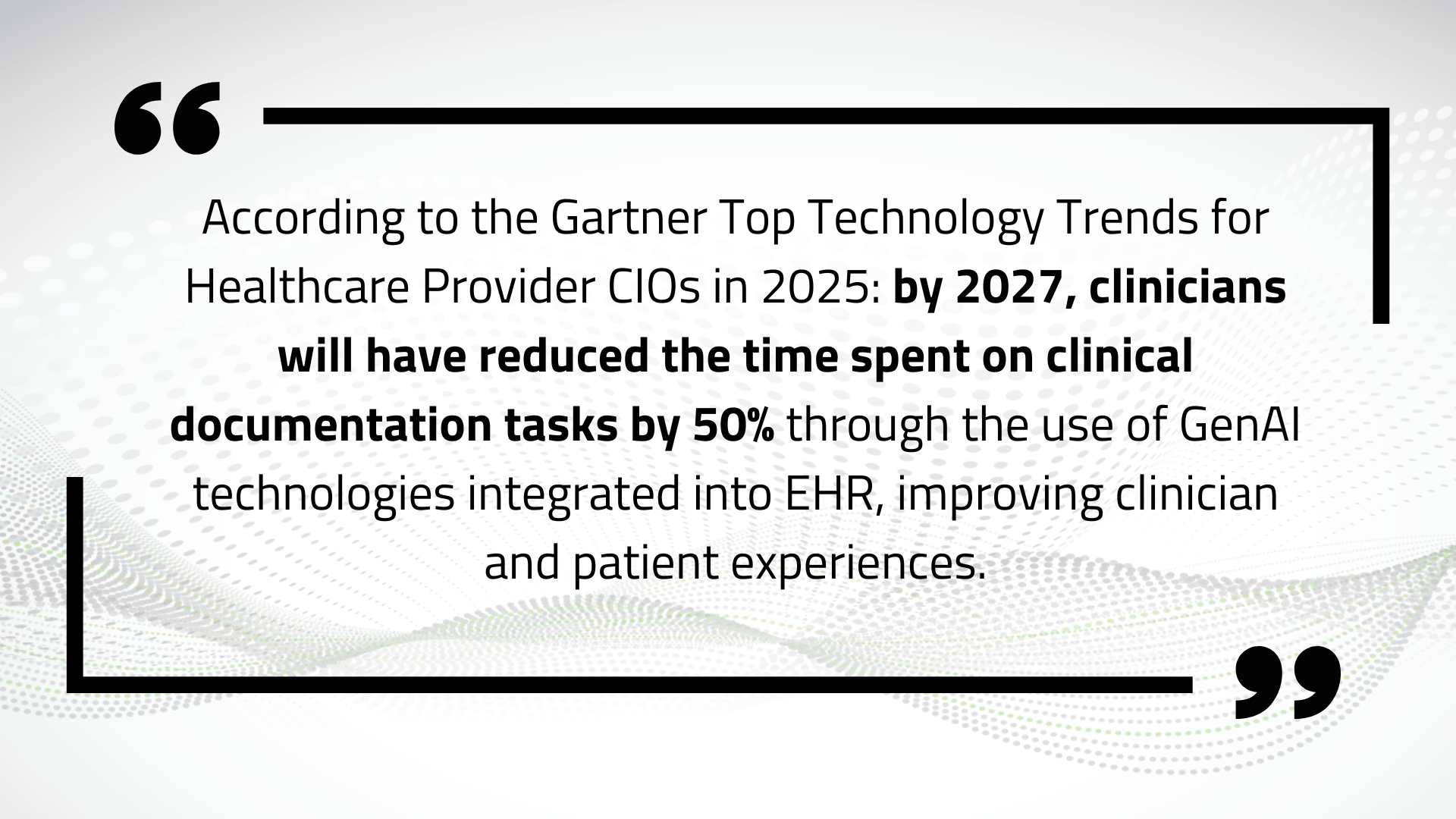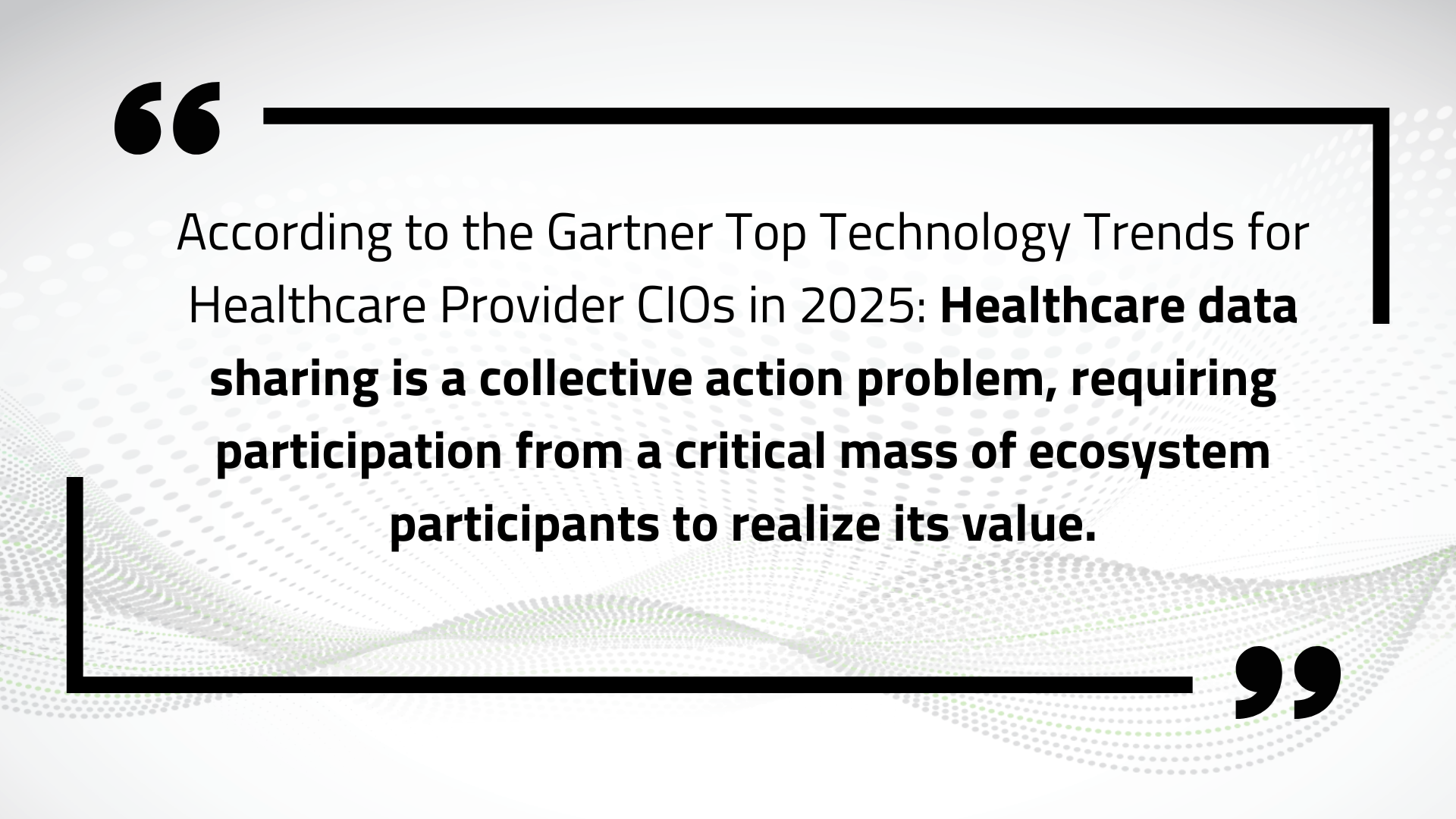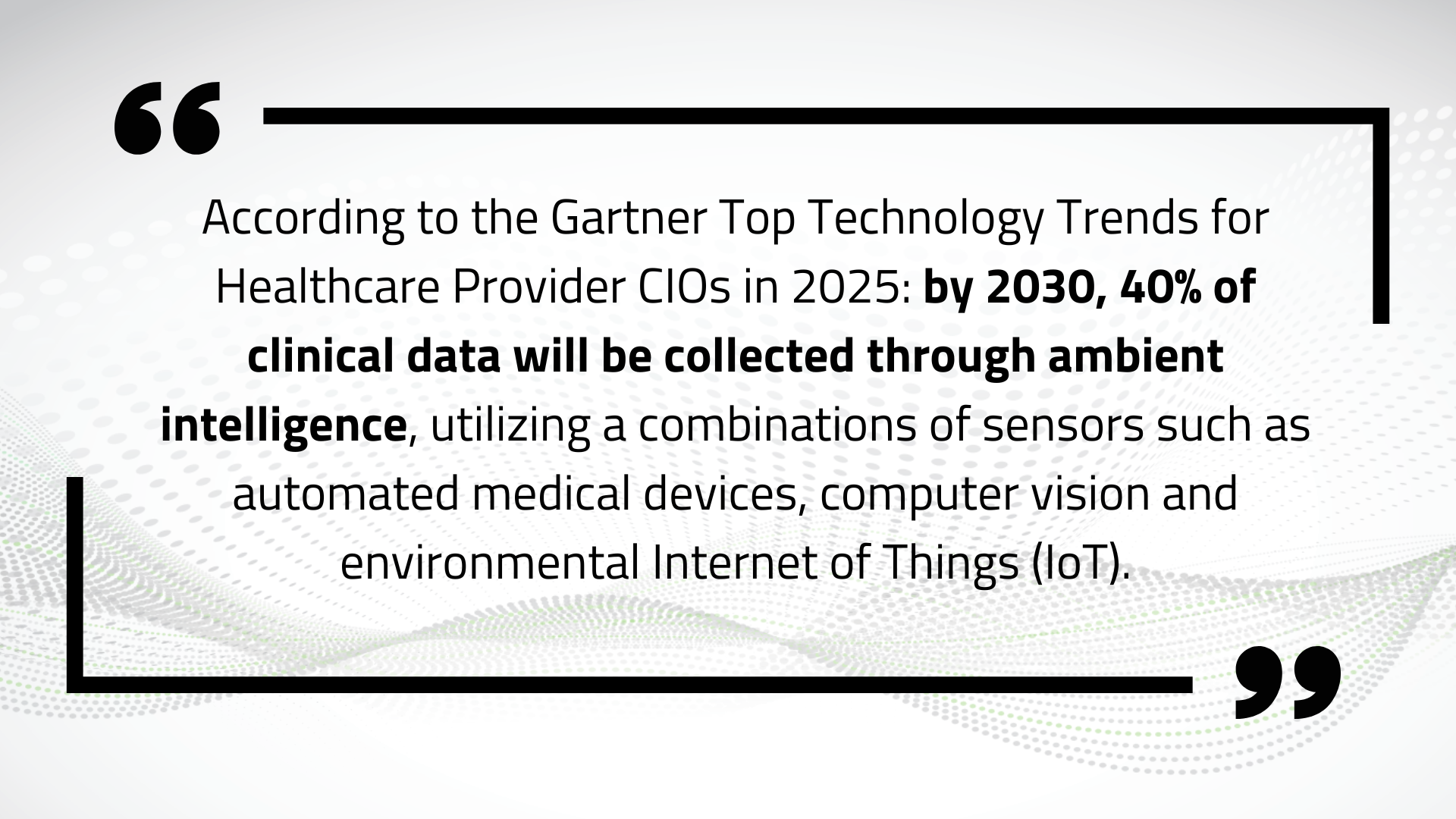Healthcare providers are navigating rapid digital transformation in 2025. According to the Gartner Top Technology Trends for Healthcare Provider CIOs in 2025, the following key technology trends are shaping strategies for CIOs and IT leaders offering both immediate value and long-term potential for organizations of all maturity levels.
Top Technology Trends for Healthcare Provider CIOs
- Broadening computing paradigms
- Accelerating AI adoption
- Growth in data sharing ecosystems
- Advancement in sensing, robotics and operational analytics
Broadening Computer Paradigms

Why it matters:
- Cloud Migration is accelerating due to its scalability and cost-efficiency.
- Generative AI is driving demand for more advanced computing infrastructure.
- Regulatory Compliance is requiring enhanced data security and provenance capabilities.
What to do:
- Reevaluate Infrastructure Strategies with flexibility and alignment to business goals.
- Engage Technology Leaders such as CIOs, CTOs, and CDOs to assess the five-year impact of AI, cloud, data capture, and governance on infrastructure and cost.
Accelerating AI Adoption

Why it matters:
- Clinician Burnout is being addressed through GenAI that automates administrative tasks.
- Back-office Automation using AI is enhancing operations like compliance, safety, and revenue cycle management.
- Advanced Clinical AI Models are improving outcomes in complex care environments.
What to do:
- Update Your AI Strategy so it’s enterprise-wide with full-scale implementation.
- Strengthen AI Foundations including governance, scalable design, and robust data management.
- Encourage AI Adoption with Employees and enable them to actively engage with AI tools as part of their everyday work, helping to drive innovation and increase adoption throughout the organization.
Growth in Data-Sharing Ecosystem Technologies

Healthcare providers are investing in technologies that enable seamless, secure data exchange from provider-to-provider systems to real-time APIs for patient access.
Why it matters:
- Regulatory Compliance continues to drive data-sharing investments.
- Cloud-Based Platforms support interoperability and reduce dependency on legacy systems.
- Privacy-Preserving Technologies like synthetic data and federated learning enhance trust and security.
What to do:
- Align Data-Sharing Initiatives with strategic clinical and business goals.
- Adopt Modern Cloud-Based Platforms that support real-time, standards-based exchange with built-in privacy capabilities.
Advancement in sensing, robotics and operational analytics

Why it matters:
- Staff Shortages especially in the healthcare industry require new approaches like AI-powered workforce management.
- Higher Patient Volumes demand efficient care delivery and optimized hospital operations.
- Emerging Technology in capacity and resource management has been proven to help with the staffing shortages.
What to do:
- Build a Business Case for sensor-based and ambient data collection to improve monitoring and decision-making.
- Invest in Automation such as automated scheduling to manage staffing challenges.
- Determine New Technology ROI by developing metrics and KPIs to measure the impact of new technologies on operational efficiency and patient outcomes.
Why These Trends Matter
As healthcare continues to evolve, these technology trends are more than just predictions they’re a strategic roadmap for organizations aiming to stay competitive, resilient, and patient-centered.
With over 13 years of experience, our team has been at the forefront of guiding healthcare organizations through complex digital transformations. We specialize in helping leaders navigate, strategize, and successfully operationalize AI and data initiatives ensuring they deliver real value across clinical, operational, and business functions. Contact us to start discussing your AI questions and needs.





